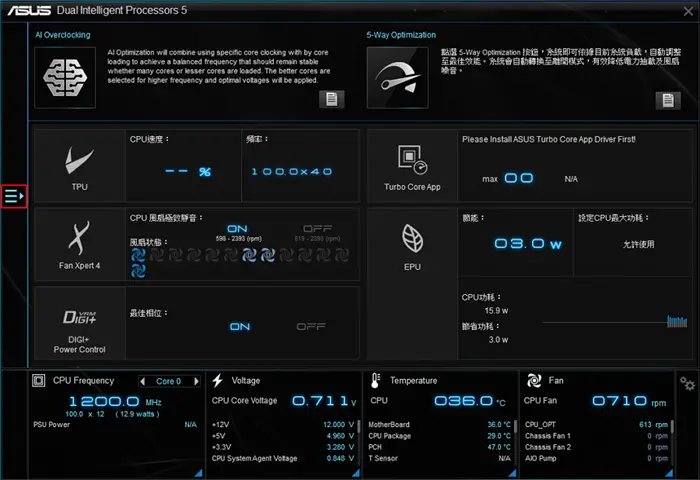Quick Answer: How To Check Cpu Fan Speed
The easiest method to check is to use UEFI. To do this, open your UEFI and go to the Monitor section. From here, you can inspect the fan speeds and temperature. You can use a temperature monitoring tool for more advanced tests, such as monitoring a CPU under load.
How do I check my fan speed in Windows 10?
1. Control the fan speed on Windows 10 with SpeedFan. Install SpeedFan and run it. In the app’s main window, click the ‘Configure’ button. A new window will open. Go to the Fans tab. Wait for the app to find and list your fans. Select the lover you want to control. Use the response curve to control the fan speed.
What speed should my CPU fan be?
The speed of CPU fans varies by manufacturer, but you can check your CPU specifications for the speed of your CPU fan. Typically, the normal rate for CPU fans ranges from 3,500 rpm to 4,000 rpm.
How do I check my CPU temperature and fan speed in Windows 10?
There is no such option to check CPU temperature in Windows 10. You can check the temperature in BIOS or use third-party applications.
How do I check the CPU temperature?
The Core Temp app provides per-core CPU temperature readings. For more details, click the Show hidden icons button in the notification area at the right edge of your Windows taskbar. You will see a temperature list for each CPU core in your computer—p
How do I check the speed of my PC fan?
Testing an Installed Fan Download and install SpeedFan. Launch SpeedFan and wait a few minutes for it to fetch data. View the information in the main program window. Check your CPU fan’s RPM data and compare it to the normal RPM range in the manual or spec sheet.

Is 1600 RPM Good for a CPU Fan?
If you look at the main window of a fan driver, you may see the fan RPM around 2000 to 3000. WhenAt 50C to 55C, the normal CPU fan speed should be about 50% of the total RPM. Gamers’ CPU temperature reaches 70C, setting the RPM to 100% is the ideal CPU fan speed.
What is the normal CPU temperature?
What CPU temperature is normal? Normal CPU temperature is completely dependent on the CPU used. In general, anything between 40°C and 65°C (or 104°F and 149°F) is considered a safe heat range during normal workloads.
Are 70 degrees Celsius too hot for a CPU?
If you’re hovering around 70 to 80 degrees Celsius, some would say it’s generally safe. While it’s a bit secure, it’s already near the danger of overheating because going near 90 degrees while gaming can damage your CPU over time. The harder your CPU is used, the faster it can wear out.
Are 60 degrees Celsius hot for a CPU?
The simple answer is yes. CPUs have their operating temperatures. For Intel, it’s usually about 60 to 65 degrees under load. They also have a guaranteed maximum temperature on stock clocks (non-oc). For overclocked CPUs, the goal is usually to reach a maximum temperature of 80-90 degrees in the worst case.
How can I check my CPU temperature without the software?
You can estimate the CPU temperature by hand. If you put your hand on your computer and feel the heat, it’s at least 120 degrees Fahrenheit. If it’s too hot to touch, it’s probably around 140 degrees Fahrenheit. My PC fans are faster, but the temperature is fine on and off the PC.
Which CPU temperature is too high?
But as a generalization that might help you identify a serious problem, if you have an Intel processor, you could say that a CPU core temperature above 40-45 degrees Celsius at idle and a temperature above 85-95 degrees Celsius under full load is probably a cause for concern.
What is a good CPU temperature when gaming?
A normal CPU temperature while gaming is between 142°F and 164°F (61°C and 73°C). Occasionally your CPU will run hotter than usual. A good rule of thumb is that your CPU temperature should not exceed 80°C, or you risk overheating.
How do I find my CPU fan model?
So if you want to know your type of cooler, you need to remove the side cover of your CPU and then look up to see the model and brand of the cooler. But if you can’t open the side cover or are afraid to do so, you can look up your PC model online and try to see if it has a part number.
Can the CPU fan speed be controlled?
Control the CPU Fan in the BIOS. The easiest way to adjust the CPU fan speed is through the BIOS. Set the fan to your fan type (DC or PWM). Every BIOS is different so instructions may vary from computer to computer, but you should look for a tab or screen associated with hardware monitoring.
Does higher speed mean better cooling?
Fans cool by moving air, measured in Cubic Feet per Minute (CFM). It is the only measure of its effectiveness. RPM is how fast the fan spins to make those CFMs. Lower RPM usually means quieter, but blade and case design has more to do with it.
Why is the CPU fan so loud?
A loud computer fan is usually caused by dust and dirt, so get out your compressed air cans and give your PC or laptop a quick blast of air to clean them as part of your regular PC maintenance routine. Loud computer fans are overloaded fans, which can affect the overall performance of your PC.
How can I increase the CPU fan speed?
Select “System Cooling Policy” from the submenu. Click the down arrow under “System Cooling Policy” to display a drop-down menu. Select “Active” from the drop-down menu to increase the speed of your CPU’s cooling fan.





